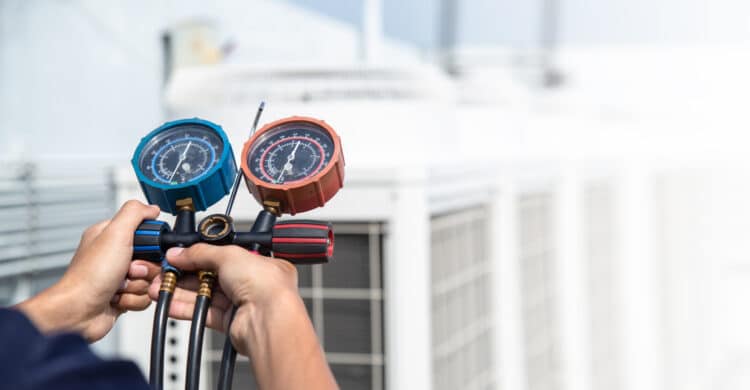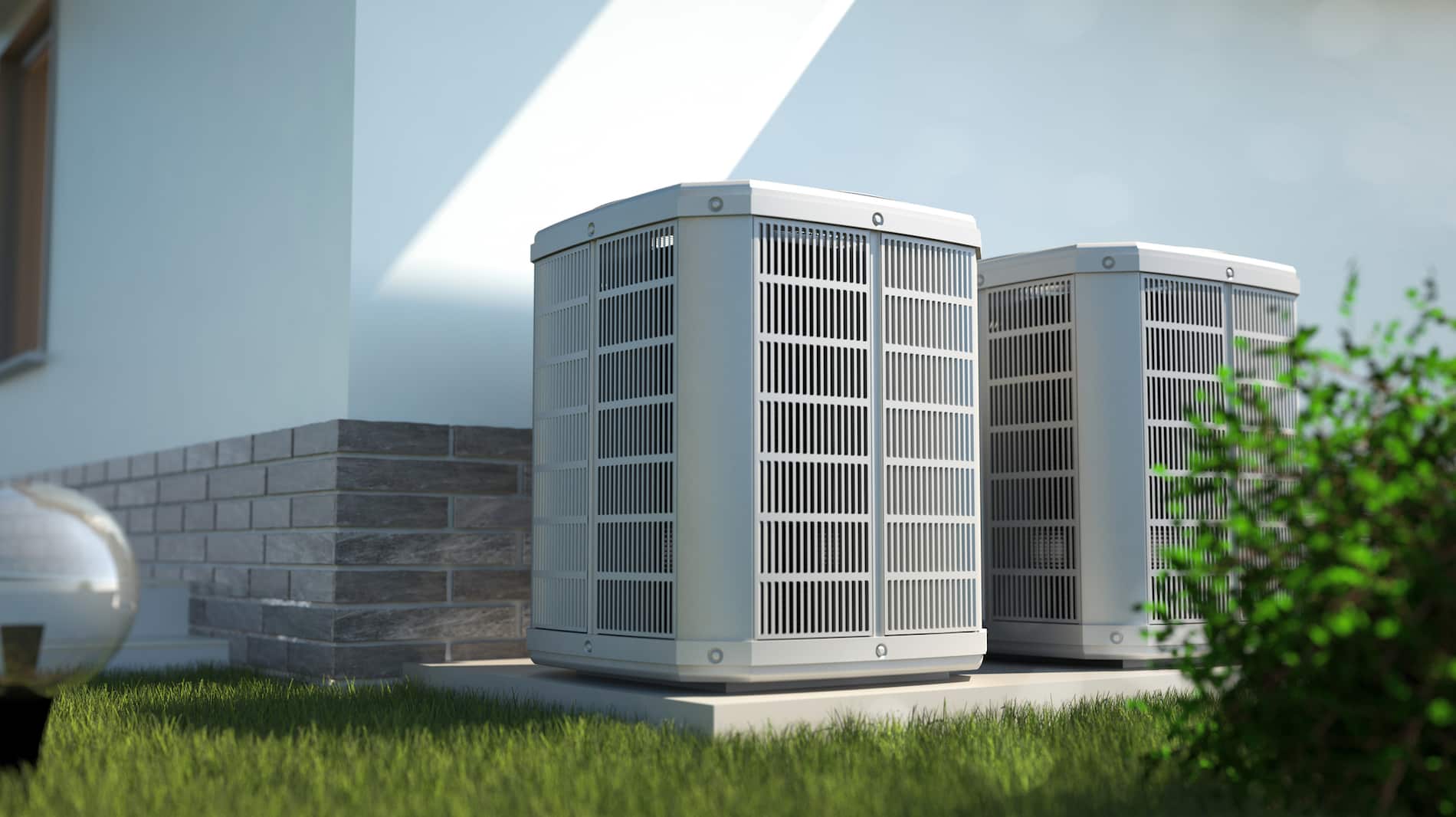
Heating and Air Repair for DIY’ers
With that in mind, you want both heat and air working at 100 percent. But what happens if you find your HVAC unit malfunctioning? Conditioned Air Systems recommends that you schedule a twice-yearly heating and air service call in order to keep your system running smoothly. And Conditioned Air is always at the ready to respond to any and all of your heating and air repair needs.
There are steps you may follow if you would like to attempt your own simple heating and air repair effort. That said it is going to take some research, patience and willingness to take a risk on your part. We’d recommend that you call us first, however, we know that some of you DIY’ers want to attempt it on your own first.
Most Common Heating Repairs
In the case of heating repair, your problems may be caused by these common issues:
- A tripped breaker
- A clogged furnace filter
- A bad igniter
- A faulty flame sensor
- A misfiring high-limit switch
Each of these parts may be fixed or replaced rather simply, though we highly-recommend that you read up on your furnace’s service manual in order to determine exactly where each is located within your furnace. Most service manuals may be found easily online.
If you have ever removed the cover of your furnace you will see that the inside is a maze of wires, valves and sensors, and it is vitally important you know exactly where each of these possible issues is located.
And before you start ANY repair attempts make sure:
- You know your furnace model and serial number – These are printed on side panels in the burner area.
- You shut off the furnace’s power source – Each furnace has a power cutoff switch inside the blower compartment. But, just to be safe, you’ll also want to turn off the overall furnace power switch on the side of the unit, as well as turning off the breakers to the entire unit.
Once you have achieved these two aspects, you may move on to repairs.
Heating Repair
Start with the simplest first:
- Power – Are your breakers off? Did cutoff switch accidentally get knocked off?
- Filter – The filter restricts air flow to the heat exchanger. If the filter is clogged it will signal the furnace computer to shut off the burners in order to keep it from overheating and creating serious problems.
If neither of these issues present themselves, you’re ready for the next steps, checking the igniter, flame sensor and high-limit switch.
The igniter and flame sensor usually require replacement every four to five years and cost roughly $50 apiece – though you’ll need that model and serial number to ensure you get the absolute right part.
The igniter and flame sensor are located inside a sealed combustion chamber and are rarely visible. Make sure to consult your service manual in order to properly determine their location. The high-limit switch is usually located underneath the combustion chamber.
There are also some possible issues that most definitely require professional help.
If your heater’s inducer fan or gas valve need replacing you will want to call a pro. The inducer fan requires special sealants and procedures to ensure it will not leak carbon monoxide. A new gas valve, meanwhile, requires you to calibrate it to your home’s gas pressure and furnace specifications. Do this one wrong and you could burn up your heat exchanger, fill it with soot, and run up your gas bill – all possibly at the same time.
But what if it’s not your heater that’s the problem? What if it’s a faulty air conditioner?
Most Common AC Repair Issues
Well, there are certainly DIY options on that end of heating and air repair as well, which could fix your problems in a hurry. Again, however, you will need to equip yourself for the process, starting with:
- A multimeter
- A voltage sniffer
- And, of course, a set of screwdrivers and socket wrenches
Air Conditioning (AC) Repair
The first thing you should establish is that the problem is not actually with your furnace. Start by setting your thermostat to AC mode and lower the temperature. If the furnace fan kicks in, you’re all clear here. If the fan does not turn on, however, you will need to ensure that the furnace is receiving power (as mentioned above).
The next step is to listen to your condenser. Your unit’s compressor (located outside) and its fan should also be running – don’t worry, you’ll be able to hear their hum quite easily. If they are not humming, then you’ll need to begin troubleshooting.
Other things to check:
- All your housing vents are wide open – Poor air flow may stem from something this simple.
- That your condenser is not dirty/clogged – You may clean your condenser with a garden hose. Aim it upwards into the top of the condenser coil to help unclog any buildup or debris. Then adjust your nozzle to a gentler stream and cleanse downward to flush anything knocked loose.
- If you are still not receiving strong air flow through your vents, you may also try switching your thermostat from “cool” to the “off” position and then switching the fan from “automatic” to “on.” Let the fan run for 30 minutes and then power up your AC. The issue may resolve itself within 12 hours.
One of the most common air conditioning failure comes from a broken contactor/relay or a start/run capacitor – especially in units five years or older. Once you have purchased these parts, you’re ready to begin working your way through the unit.
The first step in physical repair is to ensure the power to the condenser is off. To ensure this, first switch off all breakers to the AC/furnace unit and turn off your furnace switch. Next, open the electrical box next to your AC’s condenser and remove the disconnect box. At this point, use that voltage sniffer to make sure there is no power still flowing through the box. Inside the disconnect box are likely two cartridge fuses. Use your multimeter to determine if they are working. It could be as simple as replacing those fuses.
The next steps involve replacing the start/run capacitor, which is located inside the condenser’s access panel. The capacitor stores electricity and releases it to help compressor and condenser startup. NOTE: You will need to discharge the energy in the capacitor before removing it, which may be accomplished using an insulated handle screwdriver.
The next step involves replacing the contactor – a mechanical relay within the control panel. NOTE: Make sure you note where all the attached wires fit within the contactor and replace them like-for-like on the new contactor.
The final DIY step involves replacing the fan motor. Make sure to note the position of the fan blade and determine which end faces upward. NOTE: When routing the motor wires through the old conduit it is a good idea to secure the wires with zip ties so that the blade does not cut them when turned on.
After replacing any and all of these parts you will want to restart your AC unit. Know, however, that many units have built-in delay features that may take as long as 10 minutes to re-establish following a power outage. In the cases of energy-saving devices, it could take longer. And make sure you reverse your way through each step of the power-down process, replacing the disconnect block, turning the furnace switch “on,” triggering the circuit breaker, turning the AC “on” at the thermostat and setting the indoor temperature lower than the outside air temperature.
The Best Heating and Air Repair Option
If none of these fixes work, or you’re intimidated by the thought of cracking open your own furnace or condenser then do not hesitate to call the professionals at Conditioned Air Systems.
Our NATE-certified technicians will diagnose and fix any problem you may have with both timeliness and a commitment to service that you will not forget. We also offer a 24/7 service line for those issues that occur outside normal business hours.
Your Trusted HVAC Experts for Home Comfort and Efficiency

